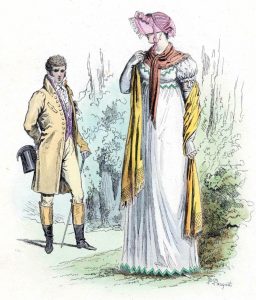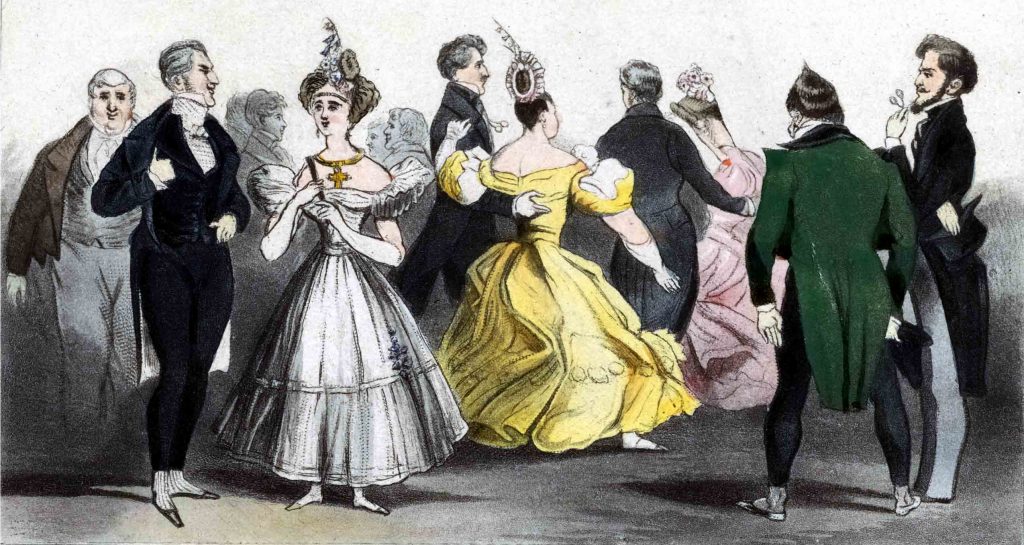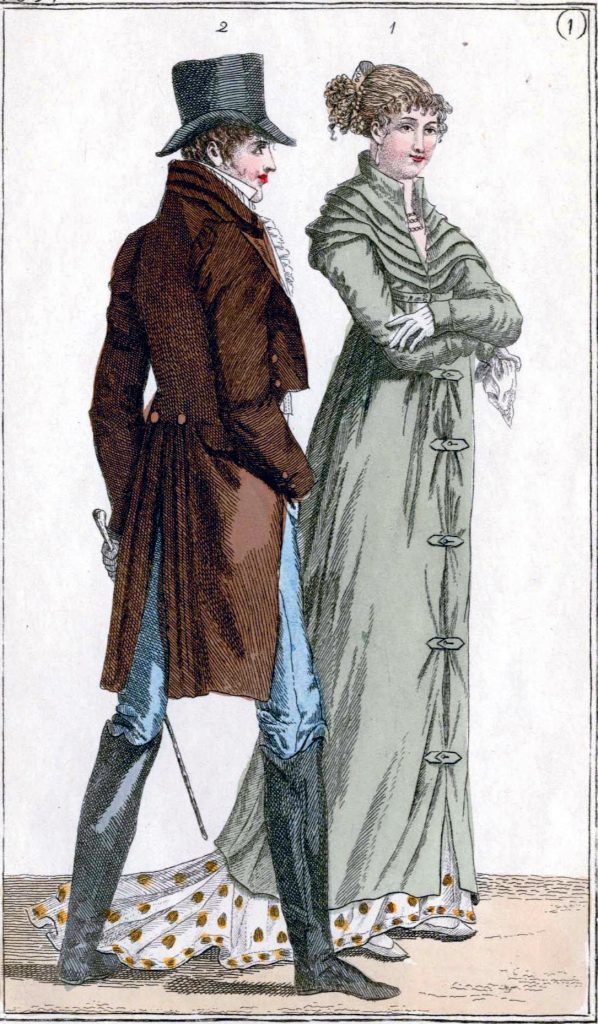
The Ton
During the Regency era in England (approximately 1795-1837), “the Ton” referred to the upper echelons of British high society. The Ton was composed of the aristocracy, wealthy landowners, and prominent members of the social elite. This exclusive group has been portrayed in literature by authors such as Jane Austen, who satirized and critiqued the social mores and expectations of the time, and more recently in the popular Netflix series “Bridgerton.”
The Ton was characterized by a rigid social hierarchy, with the royal family at the apex, followed by the aristocracy, landed gentry, and wealthy merchants. Within this hierarchy, titles and ancestry were of utmost importance. Dukes, marquesses, earls, viscounts, and barons formed the ranks of the peerage, with their wives and children holding corresponding titles.
Below the peerage were the landed gentry, who owned large estates and often held local positions of power. The gentry included baronets, knights, and untitled landowners. Wealthy merchants and professionals, such as bankers and lawyers, could also gain acceptance into the Ton through their financial success and social connections.
The Social Season
The Ton’s social calendar revolved around the “Season,” which typically lasted from late January to early July. During this time, members of the Ton would come to London to participate in a whirlwind of social events all designed to showcase their wealth and status.
One of the most important events was the debutante ball, where young women from aristocratic families were formally introduced to society. These balls served as a “marriage mart,” allowing eligible bachelors to meet potential brides. The most prestigious debutante ball was the Queen Charlotte’s Ball, held annually on the queen’s birthday.

Almack’s Assembly Rooms were another famous venue where the Ton gathered for dances and other social events. Gaining admittance to Almack’s was a mark of social acceptance and prestige. The rooms were run by a group of elite ladies known as the “Lady Patronesses,” who strictly controlled the guest list and enforced a set of rules, including a strict dress code and a ban on waltzing.
Other popular events included dinner parties, musicales, theater performances, and opera productions. The Ton would also attend horse races, such as the Royal Ascot, and participate in outdoor activities like hunting, riding, and archery.
Etiquette and Manners
To be part of the Ton, one had to adhere to a strict set of social codes and etiquette. Proper behavior, manners, and conversation skills were essential. Ladies and gentlemen were expected to be well-versed in various subjects, including literature, art, music, and politics, to engage in witty and intelligent discourse.
The rules of etiquette extended to courtship and marriage. Courtship was a formal process, with couples engaging in chaperoned walks, carriage rides, and dances. A gentleman would need to seek permission from a lady’s parents or guardians before initiating a courtship. Marriages were often arranged to maintain or elevate social status and forge alliances between powerful families
In the world of the Ton, reputation was everything. A person’s social standing could be made or broken by rumors, gossip, and scandals as is highlighted by the Bridgerton narrator, Lady Whistledown. Women, in particular, were expected to maintain an impeccable reputation, as any hint of impropriety could ruin their prospects for an advantageous marriage. Social transgressions could lead to being ostracized and those who fell from grace found themselves shunned by their peers and excluded from social events.
The Ton’s preoccupation with reputation and social status is a central theme in the works of Jane Austen, whose novels often feature characters navigating the complex web of social expectations and consequences. In “Pride and Prejudice,” for example, Lydia Bennet’s elopement with the disreputable Mr. Wickham threatens to ruin the entire family’s reputation.
Fashion and Clothing

Fashion played a crucial role in the Ton’s social scene. Clothing was a means of displaying wealth, status, and taste. During the Regency era, fashion underwent significant changes, moving away from the elaborate and restrictive styles of the previous century.
For women, the Empire silhouette became popular, featuring high waistlines just below the bust and long, flowing skirts. Dresses were made from lightweight fabrics such as muslin, silk, and cotton, often adorned with embroidery, lace, or ribbon. Accessories included long gloves, shawls, and bonnets decorated with feathers, flowers, or ribbons.
Men’s fashion also evolved, with tailcoats, waistcoats, and breeches giving way to trousers and more fitted, tailored jackets. The dandy style, epitomized by Beau Brummell, emphasized impeccable grooming, clean lines, and understated elegance. Accessories such as cravats, top hats, and walking sticks completed the look.
Born George Bryan Brummell in 1778, he was a fashion icon and trendsetter during the Regency Era in England. Brummel’s influence on men’s fashion was profound, as he rejected the ornate and flamboyant styles of the previous era in favor of a more refined, tailored look. Born into a middle-class family, Brummel used his wit, charm, and impeccable sense of style to climb the social ladder and become a close associate of the Prince Regent.
Brummel’s approach to fashion was revolutionary for his time. He eschewed the flamboyant, colorful, and heavily embellished clothing that was popular among the aristocracy, instead opting for a more refined, understated look. His style, known as “dandyism,” was characterized by well-fitted, dark-colored coats, full-length trousers, and crisp white shirts with intricately tied cravats. Brummel was meticulous about his appearance, paying close attention to cleanliness, grooming, and the perfect fit of his garments. His influence spread quickly, with many in high society seeking to emulate his fashion choices. His legacy continues to shape menswear today, with the modern suit, dress shirt, and necktie all owing a debt to the style pioneered by this Regency Era fashion icon.
Political Influence
The Ton’s influence extended beyond the social sphere, with many of its members holding significant political power. Aristocrats and wealthy landowners often served in Parliament or held influential positions in the government. Their opinions and actions could shape public policy and sway the course of national affairs.
The Prince Regent himself, later King George IV, was a central figure in the Ton, known for his extravagant lifestyle and patronage of the arts. His tumultuous personal life and political controversies were often the subject of gossip and speculation among the Ton.
